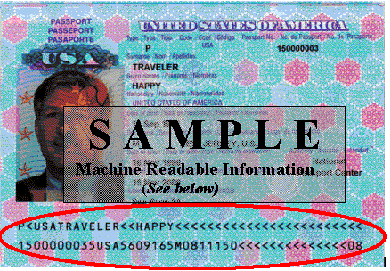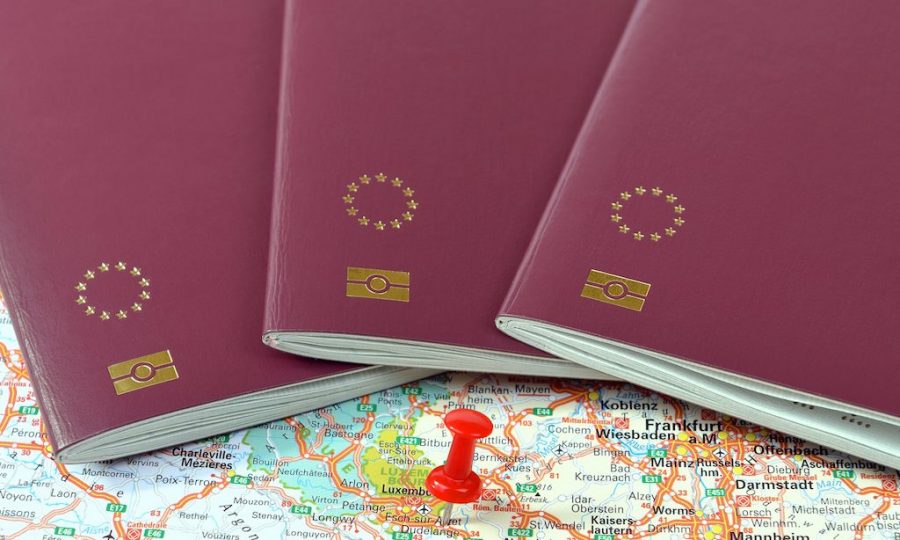Today’s passports have come a long way from just a paper book to e-chips holding biometric data. The security of passports is being upgraded every year to prevent misuse through new technologies and innovation.
Passport photos were first introduced in the US in 1916 by President Wilson’s executive order of December 15 to prevent fraud. Since then governments consistently upgrade their passport security standards with new security features.
There are currently 2 types of passports used across the world
- Machine Readable Passports (MRP)
- Biometric passports (epassports)
But what are the differences between these three in terms of security features.
1. Machine Readable Passports (MRP)
Machine Readable Passports (MRP) are most commonly used by many countries worldwide. MRP do not have chips instead encoded as optical data . The data on the identity page encoded in optical character recognition format. Many countries began to issue machine-readable travel documents in the 1980s.

2. Biometric passports
Biometric passport (or e-passports) are third generation digital passports with latest technology chips. The chip holds additional biometric features that include facial recognition, fingerprint recognition, and iris recognition. The passport’s critical information is both printed on the data page of the passport and stored in the chip. Public key infrastructure (PKI) is used to authenticate the data stored electronically in the passport chip making it expensive and difficult to forge when all security mechanisms are fully and correctly implemented. Many countries are moving towards the issue of biometric passports. Today some 89 countries use biometric passports. There are over 1 billion epassports in circulation
Biometric passports are often referred as e-passports but there is quite small subtle difference on what is stored. According to Gemalto
- ePassports store digitized photo of passport holder,
- Biometric passports store chip holds additional biometric features that include facial recognition, fingerprint recognition, and iris recognition in addition to the photo.
Fingerprint data adds additional layer of security vital for securing borders, as fingerprints solve problems related to duplicate identities, impersonation and fake passports. Biometric passports add seamless integration passing through e-gate simultaneously checking for wanted person blacklists databases using the data stored in the chip with responses within a fraction of a second.
US, Canada require using biometric passports for traveling under visa waiver program and schengen zone.
CBI passports
| Passport | Fingerprints | Validity | Cost | |
| Malta | Biometric | Yes | 10 years | €500 per person |
| Cyprus | Biometric | Yes | 10 years | €70 (adults) €45 (minors) |
| Antigua and Barbuda | Biometric fully by 2020 | Yes | 5 years | USD 300 per person |
| Dominica | Machine readable | Yes | 10 years |
Expedited USD 1,200 per person |
| Grenada | Biometric | Yes | 5 years | Included in application fee USD 1500 per person |
| St Lucia | Machine readable | Yes | 5 years | Regular passport – EC$80.00;
Express passport – EC$130.00 |
| St Kitts and Nevis | Biometric | Yes | 10 years | USD 350 per person |
| Moldova | Biometric | Yes | 7 years | EUR 300 per individual |
| Montenegro | Biometric | Yes | 10 years | EUR 25.- |
| Turkey | Biometric | Yes | 10 years | USD180 |
| Vanuatu | Machine readable | Yes | 5 years | VUV 7000/ VUV 10000/ VUV 15000 |
Moldova Passport
The Moldovan passport is one such great example of powerful passport in terms of security features designed by Gemalto. Gemalto is ePassport producer supplying epassports to over 30 countries. The company designed the Moldovan passport
The new electronic passport of the Republic of Moldova integrates a microcontroller which stores two fingerprint scans, holder’s digital portrait and blood type. It offers strong authentication of the holder’s identity as biometrics provide irrefutable evidence of the link between the document and its holder.
The validity of the new biometric “PAŞAPORT “is 7 years.
Moldovan citizens with a biometric passport can now enjoy visa free travel to the Schengen zone for short-stays as of May 2014. ePassports facilitate people-to-people contacts and strengthen business, social and cultural ties between Moldova and the European Union.
Future Passports
These are the future technologies with passports
- LDS2 technology will enable ePassports to store visa data, entry exit stamps inside the chip with additional biometrics, replacing manually fixing visas and entry/exit stamps in the passport. LDS2 will further protect the document against counterfeiting, copying and unauthorized reading or writing.
- Virtual passports in the cloud invented by Australia in 2015. With a virtual passport, a traveller’s identity and biometrics data would be stored in a cloud, so passengers would no longer need to carry their passports and risk having them lost or stolen. If you lose a digital passport, it can be easily replaced by consulate or Embassy who can activate on your mobile phone a digital copy, retrieved from the Government Passport Agency’s servers, so that you can cross borders.
- Blockchain is an exciting new technology will also apply to passport data. In the future passports and visas will be powered by blockchain.






